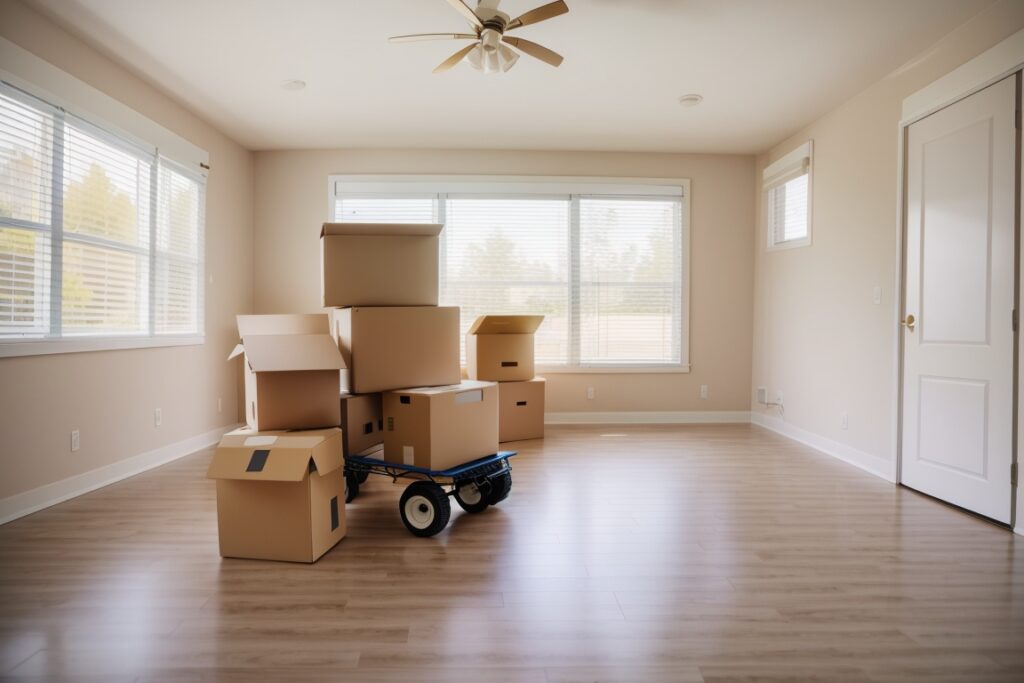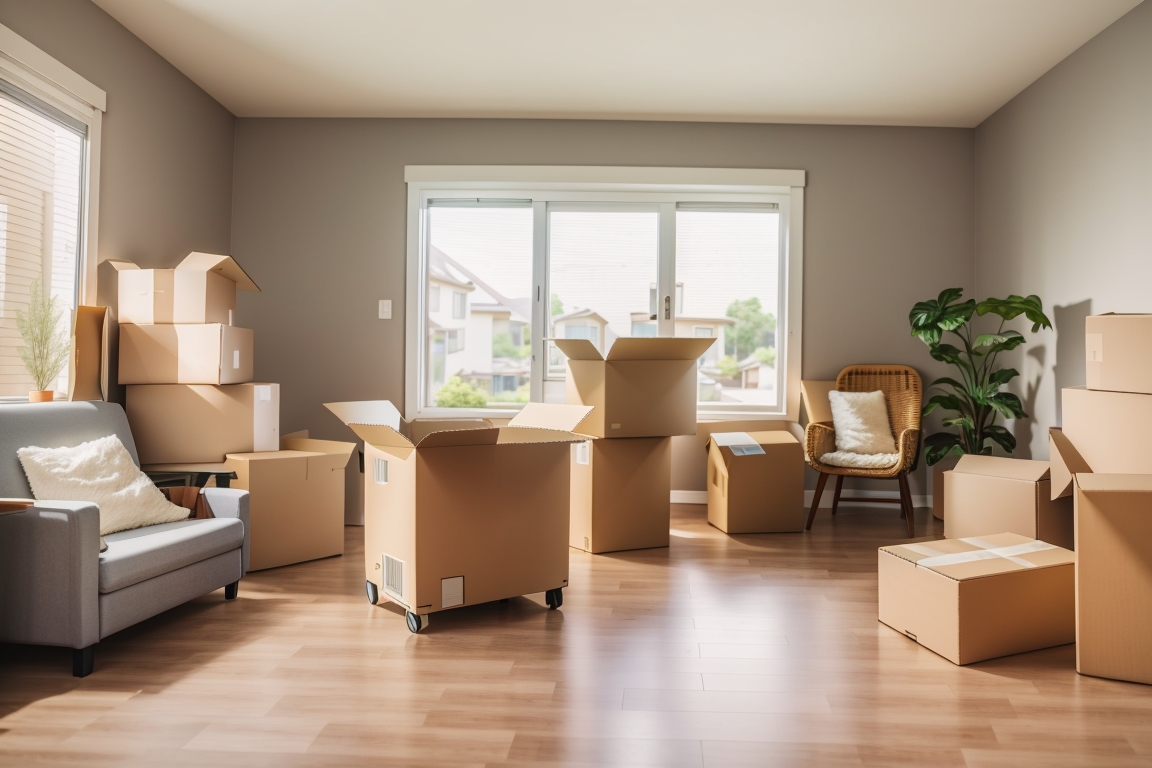9 Steps to Setting Up Your New Home
- Plan Ahead: The Key to a Smooth Unpacking Experience
Begin your planning process by creating a checklist. The checklist should be a detailed breakdown of tasks and items to be unpacked. It’s important to prioritize the list by assigning levels of importance to each room or area. Some areas, such as the kitchen and bedroom, will likely take precedence over less critical areas like the guest room or storage spaces. 
Your essentials are items you need for day-to-day living. These include items like toiletries, clothing, cookware, and utensils. Make sure to pack these separately and keep them handy. They should be some of the first items you unpack in your new home. This ensures that even if the rest of your belongings are in disarray, you can still function comfortably.
One of the most effective ways to plan your unpacking process is to adopt a room-by-room strategy. Instead of randomly attacking boxes from different areas, focus your efforts on one room at a time. Start with the largest and most cumbersome items such as furniture, and then gradually move on to smaller items. This systematic approach keeps the process organized and manageable.
Planning also involves setting realistic timeframes for each room or area. Give yourself a reasonable timeframe to complete the unpacking process. Don’t rush it, as doing so may lead to disorganization and frustration. A well-organized, relaxed approach to unpacking will result in a more pleasant experience and a better-organized home.
The unpacking process is the ideal time to declutter. As you unpack, take a closer look at each item and assess whether it still holds value or utility in your life. Create separate piles for items you want to keep, donate, or discard. This will not only lighten your load but also reduce clutter in your new home.
Labeling boxes is a task that’s often overlooked in the chaos of moving. However, it’s important to label each box clearly, specifying its contents and the room to which it belongs. This will save you a significant amount of time and frustration when you’re searching for specific items later on.
- Use a Systematic Approach
Start by prioritizing the rooms. Consider which areas you need to set up first. Typically, the kitchen and bedrooms are the most critical, so focus on those.
Begin with the largest items, such as furniture. Set up your bed, couch, dining table, and other significant pieces in their respective rooms. This gives structure to your space.
After furniture, move on to larger appliances, like kitchen appliances or electronics. Then gradually transition to smaller items, ensuring you have a place for everything.
Within each room, consider creating zones for different types of items. In the kitchen, designate areas for cooking utensils, food storage, and tableware. This helps streamline organization and keeps items where you’ll need them.
As you unpack, assess each item’s utility. The more you declutter during this process, the less you’ll need to organize and find a place.
To maintain organization, label boxes clearly with the contents and room. This ensures that you can easily locate specific items when needed.
Moving and unpacking can be physically and mentally exhausting. Be sure to take breaks to recharge and maintain your productivity.
- Declutter as You Go
Moving to a new home is an ideal time to embrace the concept of decluttering as you unpack. Not only does this approach simplify the process, but it also sets the stage for a more organized, comfortable, and personalized living space.
It eliminates the need to transport, unpack, and find a place for items that no longer serve you, which can save time and effort during the moving process.
You maintain control over what you keep and where it’s placed, reducing the risk of clutter in your new home.
By evaluating each item, you ensure that your new space reflects your current lifestyle and needs, rather than holding onto items from the past.
Decluttering can be emotionally liberating, helping you let go of the past and embrace a fresh start.
As you open each box, evaluate each item as it comes out. Start with items you rarely use or are unsure about. Create three designated piles for each item: keep, donate, discard.
Place the items you intend to keep in their designated spaces, so they don’t become part of the clutter. Items earmarked for donation should be set aside for later donation. Items to discard should be disposed of responsibly.
When dealing with sentimental items, consider whether they bring you joy or hold important memories. If they still resonate positively with you, keep them; if not, consider parting with them.
The key to effective decluttering is a balanced approach. Be practical but also acknowledge your emotional connection to certain items. It’s about finding a meaningful balance that suits your current lifestyle.
- Label Everything Clearly
Clear labeling provides a host of benefits for the unpacking process.It streamlines the unpacking process by allowing you to quickly identify the contents of each box and where they belong.
Clear labels help you keep items in their designated rooms, reducing the chances of misplaced belongings or clutter.
The frustration of searching through boxes to find a specific item is greatly reduced when boxes are accurately labeled.
You can easily determine which boxes contain essential items and prioritize their unpacking, making your first days in your new home more comfortable.
Before you start packing, ensure you have the necessary supplies, including permanent markers, labels, and color-coded stickers.
Develop a clear and concise labeling system. One common approach is to label boxes with a brief description of the contents and the room they belong to. You can use a simple numbering system to track your boxes, or color-coding for even quicker identification.
Place labels or markings on multiple sides of the box. This way, you can identify the contents even if boxes are stacked or stored in a way that conceals one side.
If you prefer, use color-coded stickers or labels to distinguish rooms. Assign a specific color to each room and mark the corresponding boxes with matching colors.
Maintain a master list that details the contents of each box. This list can be a digital document or a handwritten record. Cross-reference your list with the boxes as you unpack to ensure everything is accounted for.
For boxes containing fragile or valuable items, ensure that you mark them as “Fragile” to alert you and any movers to handle them with care.
When you need to find specific items quickly, clear labeling helps you pinpoint the right boxes effortlessly. With properly labeled boxes, you can start with the most important areas, such as the kitchen and bedrooms, ensuring your items are readily accessible.
When you label fragile items and handle them with care, you reduce the risk of damage during the move. By knowing where each box should go, you can place boxes in the correct rooms, optimizing space and organization from the beginning.
- Organize by Zones
Organizing by zones offers a host of advantages that can make the unpacking process smoother and create an efficient, well-structured living space:
It ensures that items are placed where they make the most sense and are easiest to access, improving the functionality of each area in your home.
You’ll save time searching for items, as everything is organized logically.
Zone organization reduces clutter and keeps items from being scattered around, contributing to a neater and more attractive living space.
With items grouped by function, it’s easier to keep your space tidy and maintain an organized home.
Start by identifying the main zones or areas in your home, such as the kitchen, living room, bedroom, bathroom, and any specific functional areas you may have, like a home office or a playroom for children.
Within each zone, group similar items together. For example, in the kitchen, keep cooking utensils, pots and pans, and bakeware together. In the bedroom, group clothing, accessories, and personal items separately.
Designate specific spaces or storage solutions within each zone for the grouped items. For instance, in the bathroom zone, allocate space for toiletries, towels, and personal care products.
Use labels or signs to mark the boundaries of each zone. You can use labels on drawers, shelves, or containers to ensure items are placed in their designated zones.
As you unpack, consider whether you need all the items in each category. This is an ideal time to declutter and minimize. The fewer items you have, the easier it is to maintain an organized zone.
Customize each zone to suit your preferences and needs. Add personal touches, decorations, and organization solutions that make each zone not only functional but also visually appealing.
Knowing where everything belongs and having clear zones for specific functions reduces the stress of not finding what you need.
Well-organized zones enhance comfort and productivity. In the kitchen, you can cook more efficiently; in the bedroom, you can dress quickly and comfortably.
- Invest in Storage Solutions
Before you start purchasing storage solutions, take a close look at your belongings and the specific storage needs in each area of your home. Identify the types of items you need to store and the space available in each room.
Create a plan for each room or area, outlining the types of storage solutions needed. Determine a budget to guide your investment, ensuring that you stay within your financial means.
Explore various storage solutions available on the market, such as shelves, cabinets, storage bins, closets, under-bed storage, and wall-mounted storage. Choose solutions that align with your needs and fit the available space.
While aesthetics are important, prioritize functionality when selecting storage solutions. Consider the ease of use and access to items, especially in high-traffic areas like the kitchen and bathroom.
When investing in furniture, consider pieces with built-in storage. For example, a bed with under-bed drawers or a coffee table with hidden storage compartments can save space and reduce clutter.
Measure the available space in each room and invest in storage solutions that fit precisely. Customization can be highly effective, especially in closets and pantries, where adjustable shelves and storage systems can be tailored to your needs.
- Personalize Your Space
Make your new home truly yours by adding personal touches. Hang up artwork, decorate with your favorite colors, and display cherished items. These personal touches will make your new house feel like a home.
- Take Your Time
Unpacking and organizing your new home is not a race. It’s okay to take your time to ensure everything is in its right place. Be patient with yourself and allow your new home to come together naturally.
- Enlist Help
The process of moving and unpacking often takes a toll on both your physical stamina and mental well-being. When you’re feeling overwhelmed, remember that reaching out to friends or family for assistance can make a world of difference in lightening the load. They can lend a hand with heavy lifting and provide a fresh perspective on organizing your space.
Other posts
© 2025 Local Movers. All rights reserved.
